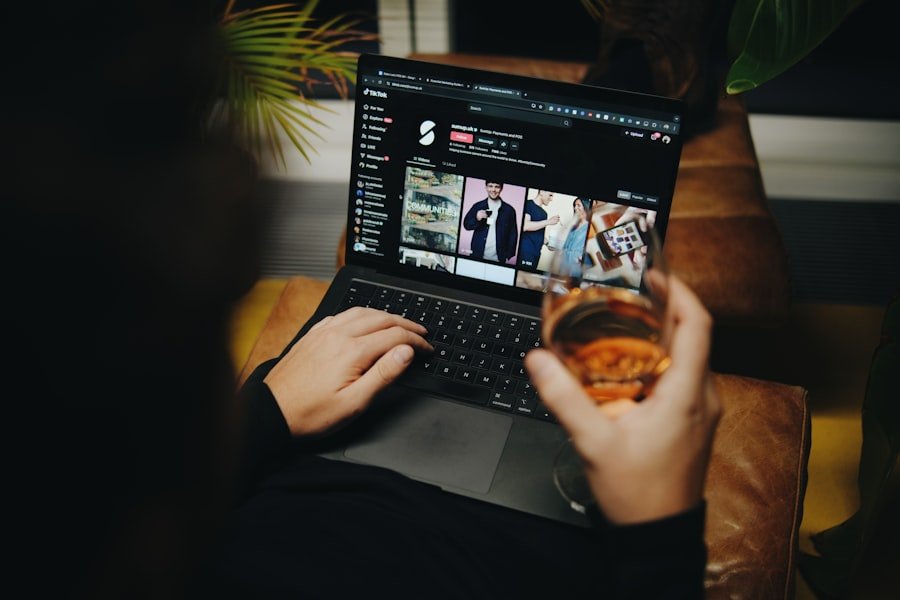Location sharing has become an integral part of our digital lives, enabling users to connect with friends and family in real-time. This feature allows individuals to share their geographical position with others, facilitating coordination for meetups, safety checks, and even social interactions. The technology behind location sharing leverages GPS, Wi-Fi, and cellular data to pinpoint a device’s location accurately.
As mobile devices have evolved, so too have the methods and applications for sharing this information, leading to a myriad of options available to users today. The implications of location sharing extend beyond mere convenience; they touch on aspects of social interaction, safety, and even business operations. For instance, parents can monitor their children’s whereabouts for safety reasons, while businesses can track delivery personnel to optimize logistics.
However, the ease of sharing one’s location also raises questions about privacy and security. Users must navigate the balance between the benefits of connectivity and the potential risks associated with exposing their whereabouts to others.
Key Takeaways
- Location sharing on mobile devices allows users to share their real-time location with friends and family for various purposes such as safety, convenience, and socializing.
- iPhone and Android devices track location using GPS, Wi-Fi, and cellular data to provide accurate location information to users and apps.
- Cross-platform location sharing between iPhone and Android devices can be achieved through various apps and services that are compatible with both operating systems.
- Privacy concerns and risks of cross-platform location sharing include potential misuse of location data, unauthorized access, and tracking by malicious entities.
- Sharing location between iPhone and Android devices can be done through built-in features like Find My Friends and Google Maps, as well as third-party apps like WhatsApp and Facebook Messenger.
How iPhone and Android Devices Track Location
Location Tracking Technologies
At the core of this functionality is the Global Positioning System (GPS), which provides precise location information by triangulating signals from satellites orbiting the Earth. In urban environments where GPS signals may be obstructed by tall buildings, devices can also rely on Wi-Fi positioning and cellular tower triangulation to enhance accuracy.
Customizing Location Settings
On iPhones, Apple’s location services are integrated into the operating system, allowing apps to request access to location data based on user permissions. Users can customize their settings to allow or restrict location access for individual applications. Similarly, Android devices offer a robust location tracking system that can be fine-tuned through the device’s settings.
Location History and Personalized Recommendations
Both platforms provide users with the ability to view their location history, offering insights into where they have been over time. This capability is particularly useful for applications like Google Maps or Apple Maps, which can provide personalized recommendations based on past locations.
Cross-Platform Location Sharing Between iPhone and Android

Cross-platform location sharing refers to the ability of users on different mobile operating systems—specifically iOS and Android—to share their locations seamlessly. This capability is essential in a world where friends and family may use different devices but still wish to stay connected. Various applications have emerged to facilitate this process, allowing users to share their real-time locations regardless of the platform they are using.
One popular example of cross-platform location sharing is through messaging apps like WhatsApp and Facebook Messenger. These applications allow users to send their current location or share live location tracking with contacts, regardless of whether they are using an iPhone or an Android device. This interoperability enhances communication and coordination among users, making it easier to meet up or ensure safety during travel.
Additionally, services like Google Maps offer features that enable users to share their estimated arrival times and locations with others, further bridging the gap between different operating systems.
Privacy Concerns and Risks of Cross-Platform Location Sharing
| Privacy Concerns and Risks of Cross-Platform Location Sharing |
|---|
| 1. Data Breaches |
| 2. Unauthorized Access to Personal Information |
| 3. Stalking and Harassment |
| 4. Identity Theft |
| 5. Location Tracking by Malicious Actors |
| 6. Exposure of Sensitive Locations |
| 7. Lack of Control Over Data Sharing |
While cross-platform location sharing offers numerous benefits, it also raises significant privacy concerns that users must consider. The act of sharing one’s location inherently involves disclosing sensitive information that could be misused if it falls into the wrong hands. For instance, if a user shares their location with a contact who has malicious intent, it could lead to stalking or unwanted attention.
Furthermore, there is always the risk of data breaches where location information could be accessed by unauthorized parties. Users must also be aware of how their location data is stored and used by third-party applications. Many apps collect location data not only for functionality but also for marketing purposes, creating a potential conflict between user privacy and corporate interests.
It is crucial for individuals to read privacy policies carefully and understand what data is being collected and how it will be used. Additionally, users should regularly review their app permissions and adjust settings to limit access to their location data when necessary.
How to Share Location Between iPhone and Android Devices
Sharing location between iPhone and Android devices can be accomplished through several straightforward methods. One of the most common ways is through messaging applications that support location sharing features. For instance, both WhatsApp and Facebook Messenger allow users to send their current location or share live tracking with contacts across different platforms.
To do this, users simply need to open a chat with the person they wish to share their location with, select the location-sharing option, and choose whether to send their current position or share live tracking for a specified duration. Another effective method for cross-platform location sharing is through dedicated navigation apps like Google Maps. Users can open Google Maps on either device, tap on the menu icon, select “Location Sharing,” and choose the contacts they want to share their location with.
This feature allows for real-time tracking and can be particularly useful for coordinating travel plans or ensuring safety during outings. By leveraging these tools, users can easily stay connected regardless of the device they are using.
Apps and Services for Cross-Platform Location Sharing

A variety of apps and services have emerged specifically designed for cross-platform location sharing, catering to diverse user needs. Google Maps stands out as one of the most widely used applications for this purpose due to its robust features and ease of use. Users can share their real-time locations with friends or family members directly through the app, making it an ideal choice for coordinating meetups or ensuring safety during travel.
Another notable application is Life360, which is designed primarily for families looking to keep track of each other’s locations. This app allows users to create private groups where family members can see each other’s locations on a map in real-time. Life360 also includes features such as driving reports and emergency alerts, enhancing its utility beyond simple location sharing.
Additionally, apps like Glympse offer temporary location sharing capabilities that allow users to share their whereabouts for a limited time without requiring recipients to download any additional software.
Tips for Secure and Responsible Cross-Platform Location Sharing
To ensure secure and responsible cross-platform location sharing, users should adopt several best practices that prioritize privacy while still enjoying the benefits of connectivity. First and foremost, individuals should only share their location with trusted contacts. It is essential to evaluate who has access to this sensitive information and limit sharing to those who genuinely need it.
Moreover, users should regularly review app permissions on their devices. Both iOS and Android provide settings that allow individuals to manage which applications have access to their location data. By disabling location access for apps that do not require it or that are not frequently used, users can minimize potential risks associated with unwanted tracking or data collection.
Additionally, utilizing temporary sharing options—such as those offered by Glympse—can provide an extra layer of security by limiting how long one’s location is visible.
The Future of Cross-Platform Location Sharing and Interoperability
As technology continues to evolve, the future of cross-platform location sharing looks promising yet complex. With advancements in artificial intelligence and machine learning, we may see more sophisticated algorithms that enhance the accuracy of location tracking while also providing users with greater control over their data. For instance, future applications could offer customizable privacy settings that allow users to define specific parameters around who can see their location and under what circumstances.
Interoperability between different platforms will likely become increasingly important as more devices enter the market. The rise of smart wearables—such as smartwatches and fitness trackers—will necessitate seamless integration with mobile devices across various operating systems. As developers focus on creating applications that work harmoniously across platforms, we may witness a shift towards more standardized protocols for location sharing that prioritize user privacy while enhancing connectivity.
In conclusion, as society becomes more interconnected through technology, understanding the nuances of cross-platform location sharing will be essential for users navigating this landscape. By staying informed about the tools available and adopting best practices for security and privacy, individuals can enjoy the benefits of real-time connectivity while safeguarding their personal information in an increasingly digital world.
If you are interested in learning more about how technology can bridge the gap between different devices, you may want to check out an article on mastering the art of charcoal smoking. This article discusses how to use different tools and techniques to enhance your cooking experience. Just like how iPhones and Androids can work together to track each other, mastering the art of charcoal smoking involves understanding how different elements can come together to create a delicious meal.
FAQs
What is the article “Can iPhone track Android” about?
The article discusses the possibility of using an iPhone to track the location of an Android device.
Can an iPhone track the location of an Android device?
No, an iPhone cannot directly track the location of an Android device. The two operating systems have different tracking and location services that are not compatible with each other.
Are there any third-party apps or services that can facilitate tracking an Android device with an iPhone?
Yes, there are third-party apps and services available that can help track the location of an Android device using an iPhone. These apps typically require installation on both devices and may have limitations based on the specific features and settings of the Android device.
What are some popular third-party apps for tracking Android devices with an iPhone?
Some popular third-party apps for tracking Android devices with an iPhone include Find My Friends, Family Locator, and Life360. These apps often provide real-time location tracking, location history, and other features for monitoring the location of the Android device.
What are the limitations of using third-party apps to track an Android device with an iPhone?
Limitations of using third-party apps to track an Android device with an iPhone may include the need for both devices to have the app installed, potential privacy concerns, and the requirement for the Android device to have certain settings enabled for accurate tracking. Additionally, some features may be limited based on the specific app and the capabilities of the Android device.

